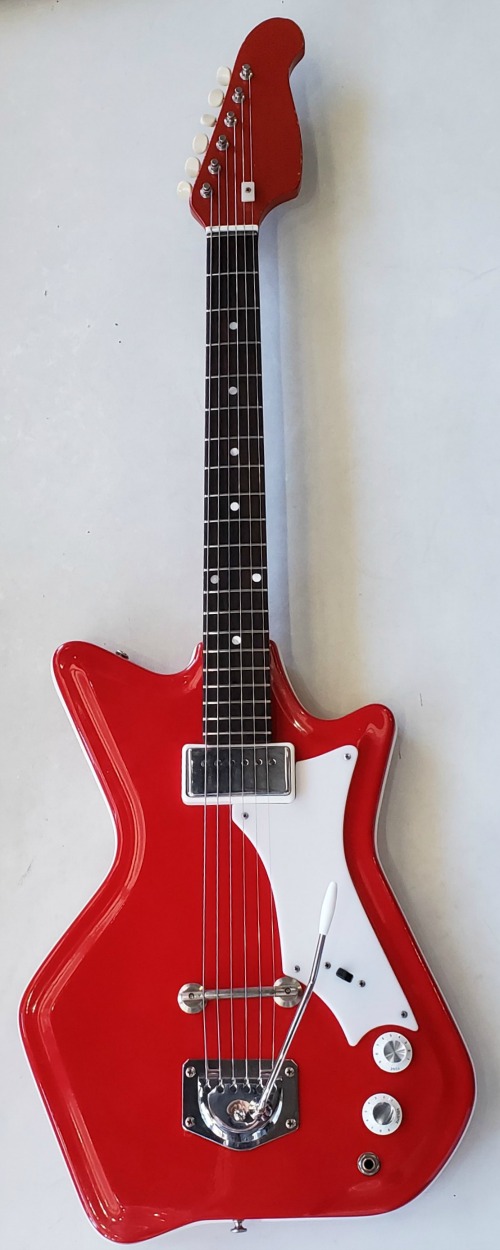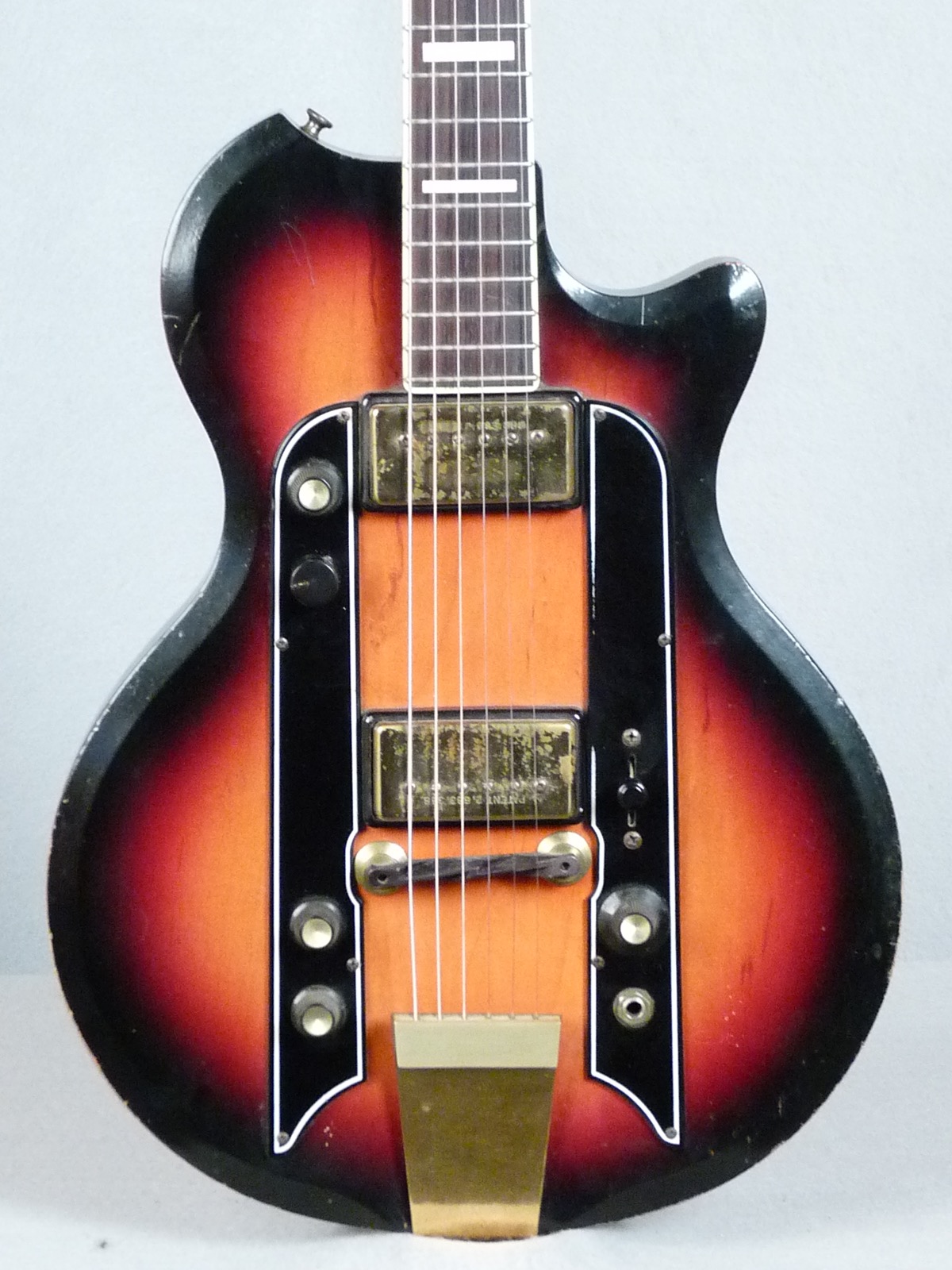

And while it was a decent-sounding creation, it certainly didn’t possess that kind of volume. With four 6L6 output tubes and three 12AX7s in the preamp, the GIM 9151A had the appearance of the big 100-watt tube heads that were sweeping stages across the country. Secret history aside, this amp is an interesting creation that speaks to the manufacturer’s efforts to address the “bigger and louder” trend of the era in a product still suited to catalog-grade pricing.

Reports have it that Strum and Drum also bought remaining Valco amplifier parts (and perhaps designs) and used them to job-out catalog amps until around ’75. We do know, however, that Strum and Drum, an instrument import/distribution outfit established in ’64 by Chicago hardware importer Norm Sackheim, acquired the National brand name in ’69, adding to a stable that included Japanese guitars with the Norma and Noble brands.

Quite precisely how this happened, we cannot say. In other words Valco is dead, long live Valco! In a manner of speaking, at least.

The 9151A was certainly a Valco circuit design and construction, and used the paraphase inverter (unusual in this late stage of guitar-amp development) that the lion’s share of push/pull Valco amps had since the mid ’40s.” “Rumors are that the buyers of the amp division continued making ‘jobber’ amps for Wards, Penncrest, and others, and this would be one.
#Supro airline guitar code
“This GIM 9151A was likely made in early 1970, because I see a date code of 235-7008 on white Mallory bypass capacitor in the photo after zooming in,” he said. The arrays of carbon-comp resistors and relatively low-grade (though characterful) ceramic-disc capacitors signal typical Valco construction, albeit on terminal strips rotated 90 degrees compared to typical circuits. Valco” himself, Terry Dobbs, a noted historian and repairman specializing in these amps. In search of an answer, we turn – as we so often have in these pages regarding anything Valco-related – to “Mr. A merger with the similarly massive Kay in 1967 aimed to help keep Valco afloat, but it went belly up in ’68.Īll of which leads to a further question: If Valco went bankrupt in ’68 and dissolved shortly after, how did this apparently Valco-made Airline GIM 9151A head find its way to the Montgomery Ward warehouse carrying date codes for components that pin its manufacture to early 1970? And it’s no anomaly others like the brethren reverb-and-tremolo-equipped 9131A kept hitting shelves (and pages) until at least 1974. The guitar market boomed, and Valco rode the wave for a time, but as trends and tastes shifted, the company had difficulty keeping up. Though the company thrived for two and a half decades – as shown by its reach through OEM re-branding, department stores, and catalog sales – it was very much a victim of the boom-and-bust ’60s. Considering the massive respect with which Valco’s creations are generally viewed today, and given the company’s size as well as its deep roots in the history of the electric guitar, it’s almost inconceivable it could go from being one of the nation’s most prolific amp makers to bankruptcy before the end of its biggest decade, but so it went.įormed circ a 1940 from the remnants of the National-Dobro Company, itself a historic pre-electric manufacturer that brought its legendary resonator guitars to market in 1927, the company was created by partners Victor Smith, Al Frost, and Louis Dopyera, whose first names were abbreviated to create the new entity’s acronym – VALco. The majority were made by the Valco company in Chicago, which also manufactured amps for Montgomery Ward’s catalog brand, Airline, after the contract passed from Danelectro in the early ’60s. But we’re also fascinated with later creations that hit the market after a popular manufacturer’s star had faded, like this “Valco” amp that was still hitting catalogs and bandstands a few years after its manufacturer had gone bankrupt.Īs much attention as Fender and Gibson have drawn over the years, plenty have recognized the sonic splendors of amps from -the 1940s to the ’60s carrying the Oahu, Gretsch, National and Supro badges. Controls: Volume, Treble, Bass on each of two channelsĮarly classic guitar amps have a way of capturing our attention.Amp and photos courtesy of David Bradshaw. The 9151A’s back-raked control panel with overhanging lighted panes makes for impressive visibility.


 0 kommentar(er)
0 kommentar(er)
